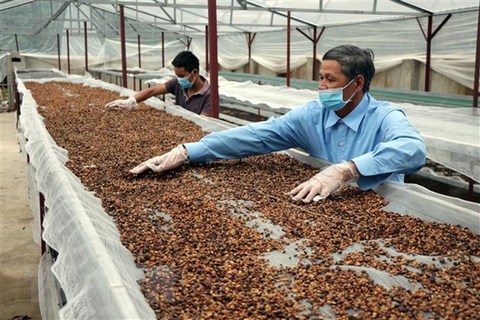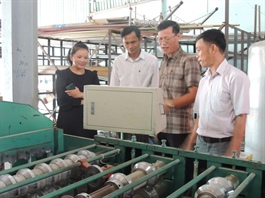Vietnam's cooperative economy needs changes
Vietnam's cooperative economy needs changes
It is necessary for the cooperatives and cooperative economic model to have the “determination to digital transformation, innovation, and change associated with efficiency.”
Vietnam's collaborative and cooperative economy needs to actively change production and business methods and undertake digital transformation to adapt to the new context.

Prime Minister Pham Minh Chinh chairs the meeting. Photo: TTXVN |
Prime Minister Pham Minh Chinh underlined that it is the requirement for the sector when chairing the related forum with the theme “Digital transformation - The driving force for developing collaborative and cooperative economy on September 23, Hanoi.
Chinh stated the cooperative economy is an important economic factor and should be enhanced and developed along with the State sector to be a firm foundation of the national economy.
Over the years, the cooperative sector has undergone positive changes in awareness, policies, regulation, quantity, organizational structure, linkage, and operational efficiency. However, it has not yet developed as expected. The renovation and efficiency improvement of the collective economy still faces many difficulties, including low capacity, insufficient internal resources, sub-standard operational efficiency, and an inadequate organizational model.
It is necessary for the cooperatives and cooperative economic model to have the “determination to digital transformation, innovation, and change associated with efficiency."
Speaking at the event, a Vietnam Cooperative Alliance (VCA) representative said cooperatives across the country operate in the agricultural, non-agricultural, and credit sectors. Many cooperatives have transformed into a new and flexible cooperative model, applying information technology, digital transformation, and adapting to market needs.
The country currently has 28,237 cooperatives, of which 18,785 are agricultural, and 9,452 are non-agricultural. Throughout the country, there are 130,760 cooperative groups and 120 cooperative unions in the farming and non-farming fields, he added.Among the total, there are 1,718 agricultural cooperatives applying high technology, including 1,342 farming cooperatives, 74 livestock cooperatives, 74 fisheries cooperatives, four salt-farming cooperatives, and 223 service ones.
A VCA statistic shows that there are 1,490 cooperatives applying high technology in fields of cultivation, farming, and preservation, accounting for 78.4%, more than 150 in automation technology, or 12.5%, 60 in biotechnology, or 7.1%).
Among the total of 1,718 agricultural cooperatives applying high technology, there are 240 cooperatives using management software.
Many agricultural cooperatives, especially those that have young, dynamic, and successful directors and human resources, have initially succeeded with the proactive model in approach, investment, and production-consumption connection.
According to the latest survey from the VCA, about 83.5% of responded cooperatives consider digital transformation necessary; another 18.9% planned to have a specific implementation roadmap, and 68% of cooperatives use at least one of the methods of introducing and selling products online.
By 2030, the Government set a target to have 45,000 cooperatives with eight million members and 340 cooperative unions with 1,700 members, of which more than 5,000 cooperatives apply high technology to the production and consumption of agricultural products.
By 2045, all collective economic organizations will apply technology, especially digital transformation into production, business and service activities.























